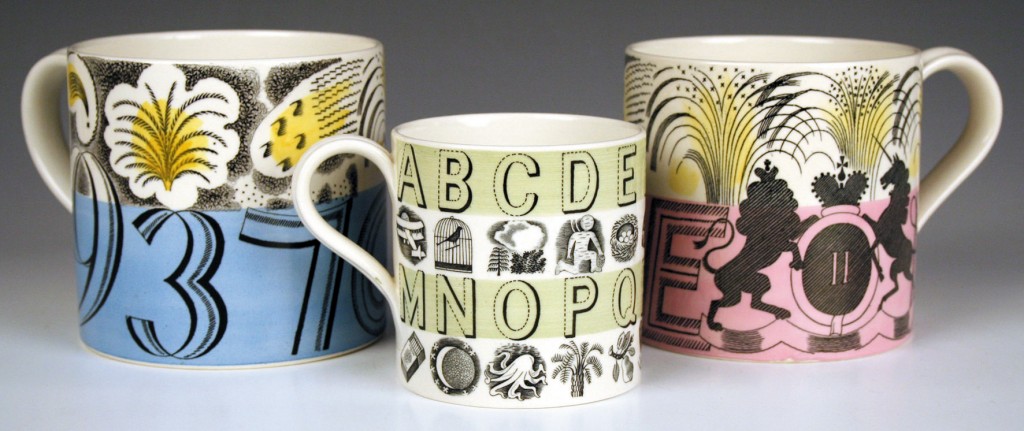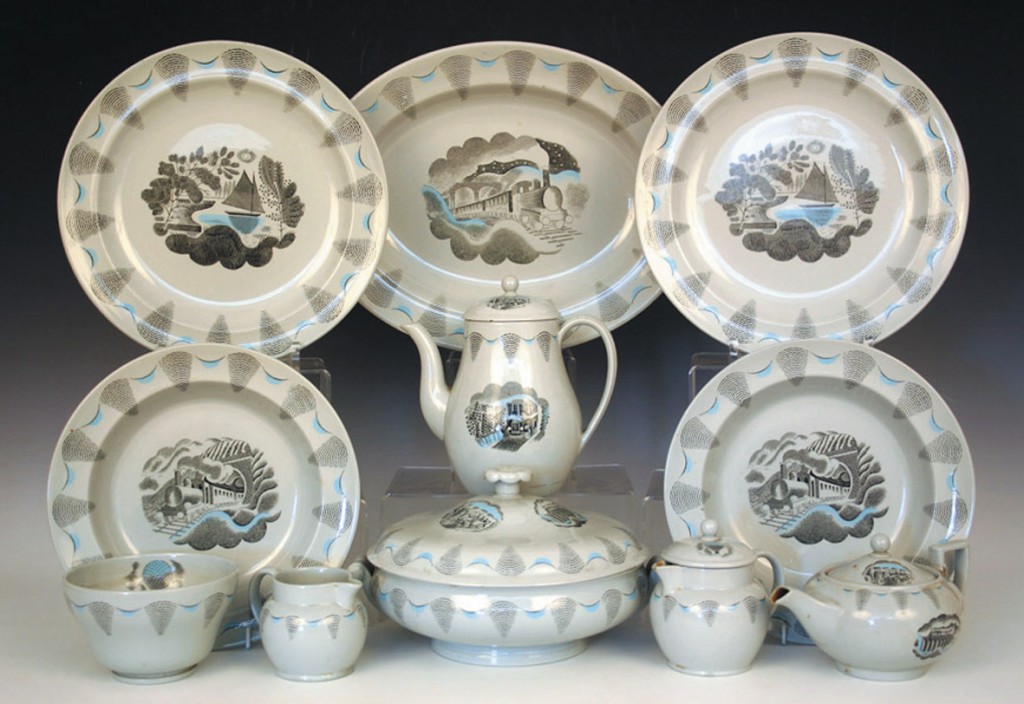
The artist Eric Ravilious lived and worked in Sussex. Known primarily for his watercolour landscapes and wartime studies, Ravilious was also a talented illustrator and designer. His paintings now regularly realise tens of thousands of pounds but examples of his ceramics designs for Wedgwood remain relatively accessible to collectors.
Eric Ravilious was born in 1903. As a very young boy he moved with his parents from Acton to Eastbourne in Sussex. There his father ran an antique shop. Ravilious was educated at Eastbourne Grammar School. In 1919 he won a scholarship to Eastbourne School of Art and in 1922 to the Royal College of Art in London, where he met his lifelong friend and fellow artist Edward Bawden. Both men studied under the artist Paul Nash, who was generous in encouraging and promoting their work. Ravilious subsequently taught part-time at both art schools.
In the early part of the 20th century there were attempts to address the separation between craftsmen and artists. Among the leading voices in this movement were William Rothenstein, principal of The Royal College of Art, artists like Paul Nash, Eric Gill, John Piper and Graham Sutherland, and Roland Penrose’s Omega Workshop, which involved the Bloomsbury artists Vanessa Bell and Duncan Grant. All these artists engaged with ceramics. In 1935 Eric Ravilious was invited by the Wedgwood factory to design a commemorative mug for the coronation of Edward VIII. After the King’s abdication in 1936, the design was reworked for the coronation of his brother, George VI, and subsequently for that of our own Queen Elizabeth II – both mugs are illustrated here. The designs give a reserved English voice to the joy and excitement that these coronations brought to our nation in the most wonderful way. Each monarch’s royal cipher and coronation date are set in bands of blue and pink, beneath cascading fireworks against a clouded night sky. The designs are modern and yet they capture the ancient in the subject, something that is often reflected in Ravilious’ work. There is a sense of continuity; this modern artist’s work sits comfortably in the evolving procession of English romantic painters from the late 18th and early 19th centuries, artists like John Sell Cotman and Samuel Palmer. These influences and qualities gift Ravilious’ work with a very English corrective to modernism’s extremes, expressed in his emotionally cool, structural paintings and designs. Today, George VI and Queen Elizabeth II coronation mugs like these could be bought at auction for around £600 and £120 respectively.
The delightful alphabet mug illustrated was commissioned by Wedgwood in 1937. Banded in apple green, each letter of the alphabet is accompanied by a printed vignette; ‘A’ is for aeroplane, ‘E’ is for eggs, ‘O’ is for Octopus and so on. This mug would sell for about £350 at auction today.

In 1938 Wedgwood commissioned Ravilious to design the ‘Travel’ pattern dinner service. It captures modes of transport in an enchanting way. The trains on the meat platter and plates leave a trail of smoke as they hurry towards us, contrasting the sailing boats, which seem almost becalmed in the gentle breeze. This small selection of Travel pattern dinnerware would sell in one of our specialist auctions for around £800.
Eric Ravilious’ work continues to be reassessed and celebrated by art historians. Tragically in 1942, while he was working as a war artist, the rescue plane in which Ravilious was travelling off the coast of Iceland was lost. He died with the airmen for whom he had such respect. The body of work that he produced during his short lifetime is made exceptional by both its quality and Ravilious’ own very particular voice, expressed in paint, design and print. For the moment, the pieces he designed for Wedgwood represent an affordable way to collect examples of his work, but prices are set to rise.
It seems to me that our current, somewhat fragmented, postmodern age is suffering from a cult of celebrity. Artists have not been immune from this and many have once again lost their connection with craft and design. Eric Ravilious and his fellow modern British artists enriched our lives in the interwar years of the 20th century, as they allowed their artistic voices to inform the manufacture and design of ceramics. Perhaps it is once again time to give voice to the artist as craftsman.
By Revd. Rupert Toovey. Originally published on 19th June 2013 in the West Sussex Gazette.